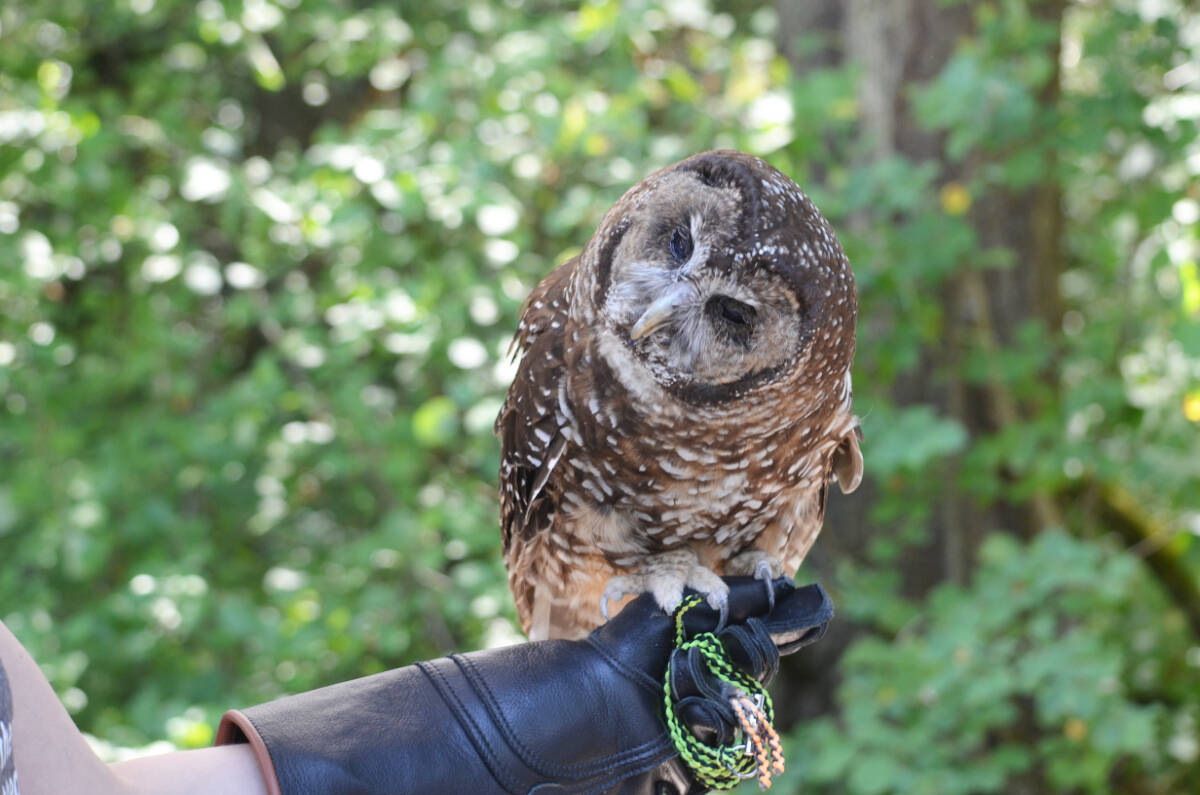Members of Spuzzum First Nation are “furious” after the federal government reversed course on an emergency order to protect the endangered northern spotted owl.
Spuzzum Chief James Hobart said his nation’s anger comes after the Canadian Wildlife Service, a branch of the Department of Environment, informed him that the federal government would not carry out an emergency order to prevent logging in two watersheds in the Fraser Canyon.
“Canada got it wrong. They followed the cue of the B.C. government and yet it doesn’t have a credible plan when it comes to the spotted owl nor proper consultation with First Nations about what happens in the owl’s habitat,” sad Spuzzum First Nation Chief James Hobart. “The province’s own logging agency, BC Timber Sales, continues to tell companies it’s business as usual and they can cut old-growth even in areas targeted for deferrals, that it’s up to them to decide. B.C. has turned its back on the last spotted owl.”
Earlier this year, the Federal Minister of Environment Steven Guilbeault said that he would recommend the emergency order to cabinet to protect the spotted owl from imminent threats to its recovery and survival.
However, in a letter announcing the reversal, the federal government is instead endorsing “a collaborative approach” with the Province and Indigenous communities after considering factors such as “socio-economic and legal impacts.”
The decision comes after an eight month delay, from Guilbeault, to make an emergency order recommendation to cabinet. In January of this year, after Wilderness Committee (WC) petitioned Guilbeault in October 2022, the minister determined that the 2,500 hectares of spotted owl habitat was at risk of being logged within the year. The logging, which takes place in the Fraser Canyon, poses a threat to the bird’s wild population recovery — which Guilbeault acknowledged.
Despite this, the WC said that Guilbeault “failed to make an emergency order recommendation to cabinet for eight months,” forcing them to launch a court case in June to challenge the delay.
Now, after the cabinet’s decision, WC — represented by Ecojustice, an environmental law charity — is heading to court next Wednesday (Oct.18) to determine if the minister’s delay in recommending this emergency order to cabinet is permitted under the federal Species at Risk law.
“The minister has been required by law since January to recommend an emergency order,” said Ecojustice lawyer Andhra Azevedo, who is representing WC “Instead, the minister spent months ‘engaging’ with B.C., while B.C. made no new commitments to protect habitat and instead continued to approve logging. To state the obvious, we have emergency orders under the Species at Risk Act to respond to emergencies — what we’ve seen by the minister and now cabinet is nowhere close to an emergency response.”
Currently there are three spotted owls, two males and one female, in the Fraser Canyon. The female was born in the wild. Meanwhile the males, named ‘sítist’ [te-syst] and ‘wíkcn’ [week-chin], were released on July 25 into the protected habitat in the Fraser Canyon.
Their release, the second to take place, is part of a partnership between the province’s Spotted Owl Breeding and Release Program and Spuzzum First Nation, to help recover the wild northern spotted owl populations in B.C. Sítist was originally released in August 2022, with two other males, as part of the program’s first release. Unfortunately, he was later found injured near train tracks in the Fraser Canyon. After being rehabilitated by the Orphaned Wildlife Society, he was returned to the program’s breeding facility in Langley.
Later, in May of this year, ministry staff confirmed that the two other males had died from unknown causes.
The spotted owls, who are known in Spuzzum’s language as Skelúle? (Northern Spotted Owl is the name given by settlers of Canada), are seen as important relatives of the First Nation community, whose “presence are indicative of the health” of the “region’s old-growth forests becasue of its independence on their ecosystems for survial.”
In the time leading up to the first release, the province worked with the First Nations in B.C. to protect more than 280,000 hectares of spotted owl habitat in the Cascade region under the Spotted Owl Management Plan — a territory that can support 250 owls. And, in hopes of supporting their population’s recovery, an old-growth logging ban was also extended for part of the Fraser Canyon (where the birds were released) for another two years.
Despite this, WC said that they documented sites where logging took place during the summer. And, with the emergency order rejected, it is believed that continued logging will prevent the recovery of the spotted owl’s wild population in B.C.; though the owl population faces a dire situation, Canadian Wildlife Service scientists said that the species’ recovery is possible through the reintroduction of the owls into the wild. However, the success of this reintroduction depends on the birds having enough of their old-growth habitat to establish a stable population.
“Despite scientists and the federal environment minister identifying that B.C.’s approved logging posed an imminent threat to the spotted owl, the BC NDP government wants to continue old-growth logging and they have effectively pressured the federal cabinet to allow it,” said Torrance Coste, the National Campaign Director for WC. “If we do lose the spotted owl in Canada, responsibility will sit with Premier David Eby and B.C. ministers like George Heyman and Nathan Cullen — and the federal cabinet that went along with them.”
— With files from The Canadian Press
READ MORE: Second release brings B.C.’s wild spotted owl population from 1 to 3
@KemoneMoodley
kemone.moodley@hopestandard.com
Like us on Facebook and follow us on Twitter.

